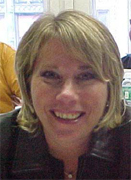| What on Earth is
a Biome?
Project URL:
http://teachersnetwork.org/teachnetnyc/bglasgold/cover.html
How it works:
The
purpose of this unit is for students to become familiar with the
characteristics of biomes, and to identify the different biomes on Earth. They will locate the regions where the various biomes are located
and will learn the vocabulary associated with biomes. The students will use computer technology to research Earth's
biomes, locate the different biomes on Earth, and use various programs to
map Earth's biome regions.
One
initial lesson would be to have the children research Earth's biomes
on the Internet. Using the links provided by the teacher, the students will be
able to learn Earth's seven biomes and to describe their abiotic
(physical) characteristics. Next, they will fill in a data
table created on the computer, and then create a world map, color keying
the seven biomes onto the map.
Software materials used:
ClarisWorks,
Grolier's or Encarta Multimedia Encyclopedia, KidPix, SuperPrint, Internet
browser
Standards:
Students
demonstrate understanding of organisms and their environments.
Students demonstrate understanding of change over time.
Students demonstrate understanding of physical positions on Earth.
Students demonstrate understanding of Earth's diversity.
Students will write a report of information.
Students will conduct research using the Internet.
The Students:
This
unit is geared toward students of average ability, in grades three to
five. This lesson can be
adapted for middle school children as well, by investigating each biome in
greater depth. The students
need to have knowledge of the software mentioned above. The students could be set up in cooperative learning groups
with each student assigned a role that could be changed as they study each
different biome, giving every child a chance to have a different role.
Overall Value:
I
think the best feature of the program is the students' use of the Internet
as a research tool. The
wealth of information found there will astound them. I also think it is a great way for the students to show their
creativity, in making maps, deciding on the legend for their maps,
and
filling in data tables. This
unit gives the students a multi-faceted look at the diversity of life on
Earth, and an appreciation for how physical factors affect the growth of life.
Tips:
Teachers
should research websites in advance. Have all materials needed on hand. Motivate the students with plenty of pictures. This unit
could be extended to include student-developed Hyperstudio
presentations. |

Bonnie Glasgold is
a science enrichment teacher at P.S. 101 in Brooklyn, New
York. She has been teaching
for 21 years. She has been a
TeachNet Mentor for two years and currently teaches Classroom Management
courses for new teachers via the Teachers Network online course.
Email BMGLAS@aol.com
Estimated Class Periods To Complete: 4
Subject areas: Science, Social
Studies
Beginning Grade Level: 3
Ending Grade Level: 5 |